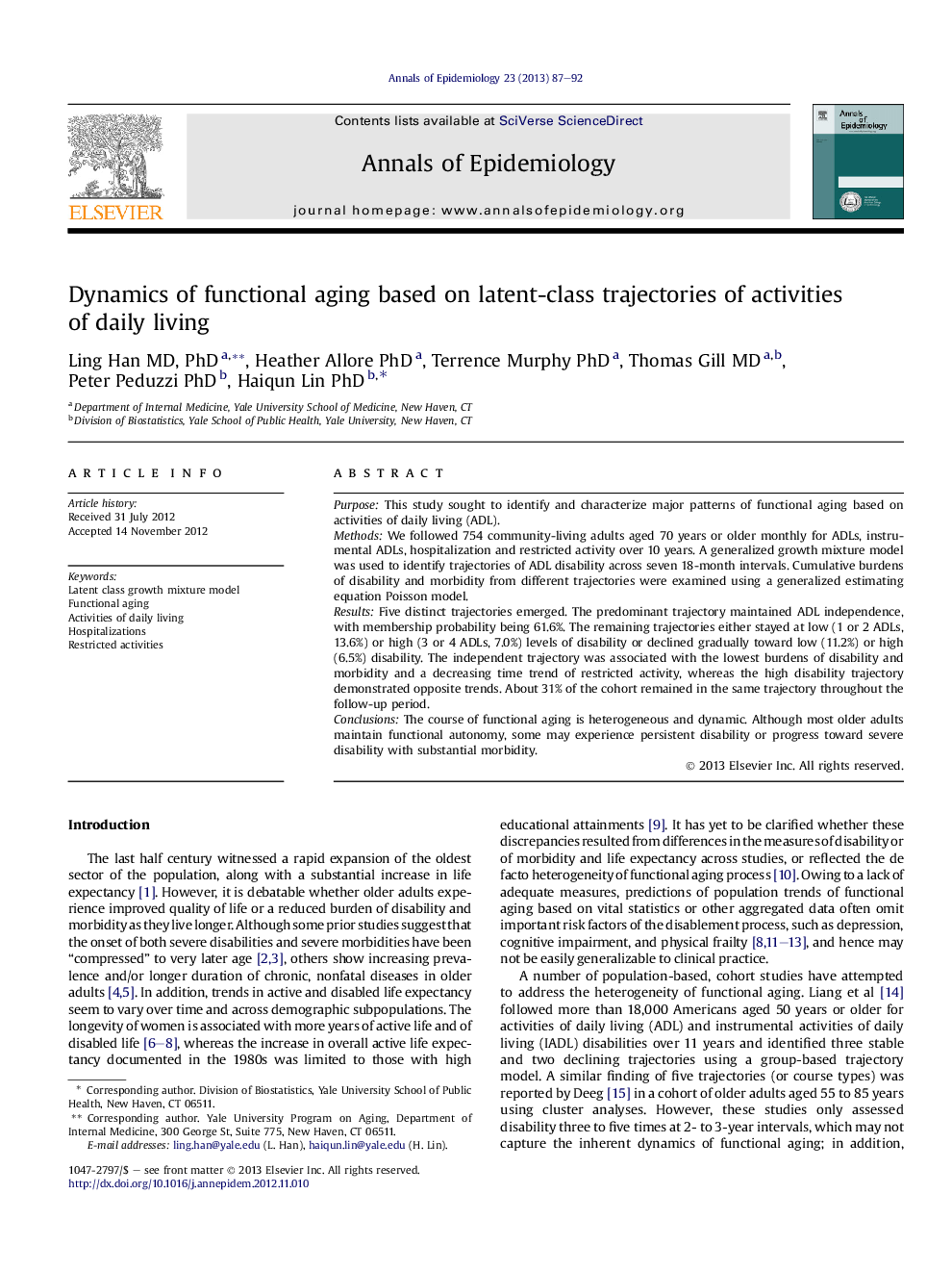| Article ID | Journal | Published Year | Pages | File Type |
|---|---|---|---|---|
| 3444250 | Annals of Epidemiology | 2013 | 6 Pages |
PurposeThis study sought to identify and characterize major patterns of functional aging based on activities of daily living (ADL).MethodsWe followed 754 community-living adults aged 70 years or older monthly for ADLs, instrumental ADLs, hospitalization and restricted activity over 10 years. A generalized growth mixture model was used to identify trajectories of ADL disability across seven 18-month intervals. Cumulative burdens of disability and morbidity from different trajectories were examined using a generalized estimating equation Poisson model.ResultsFive distinct trajectories emerged. The predominant trajectory maintained ADL independence, with membership probability being 61.6%. The remaining trajectories either stayed at low (1 or 2 ADLs, 13.6%) or high (3 or 4 ADLs, 7.0%) levels of disability or declined gradually toward low (11.2%) or high (6.5%) disability. The independent trajectory was associated with the lowest burdens of disability and morbidity and a decreasing time trend of restricted activity, whereas the high disability trajectory demonstrated opposite trends. About 31% of the cohort remained in the same trajectory throughout the follow-up period.ConclusionsThe course of functional aging is heterogeneous and dynamic. Although most older adults maintain functional autonomy, some may experience persistent disability or progress toward severe disability with substantial morbidity.
